#Diamond Valley California
Explore tagged Tumblr posts
Text
Cosmic Chaos and Revenge: Jade Ann Byrne’s 50 Ft. eGirl Dominates Halloween in a Retro Sci-Fi Parody
The 50 Ft. eGirl Takes on Halloween: A Classic American Satire by Jade Ann Byrne It’s finally here! This Halloween, we at Eat My Cake Records are thrilled to present the long-anticipated Attack of the 50 Ft. eGirl, a remake that honors and twists the iconic 1958 cult classic Attack of the 50 Ft. Woman. Staying true to the original’s succinct runtime of 66 minutes, this modern version—directed,…
#50 Ft Woman remake#alien encounter#Attack of the 50 Ft eGirl#cinematic thriller#classic American satire#cosmic queen#cult classic parody#Diamond Valley California#Digital Cowgirl#Dior bedsheets#Eat My Cake Records#eGirl#eGirl aesthetic#eGirl4Rent#femme fatale#giant humanoid alien#Gilman Springs Road#grippy sock jail#Halloween 2024#Halloween movie premiere#Hollywood satire#Jade Ann Byrne#JadeAnnByrne#modern twist on classic#retro horror film#retro VHS#revenge thriller#sci-fi horror remake#Space Country Trap
0 notes
Text

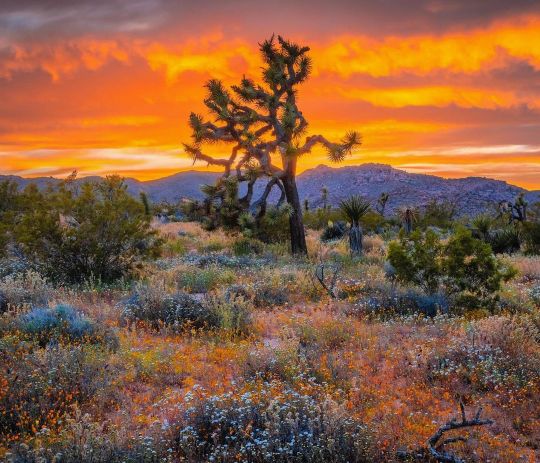
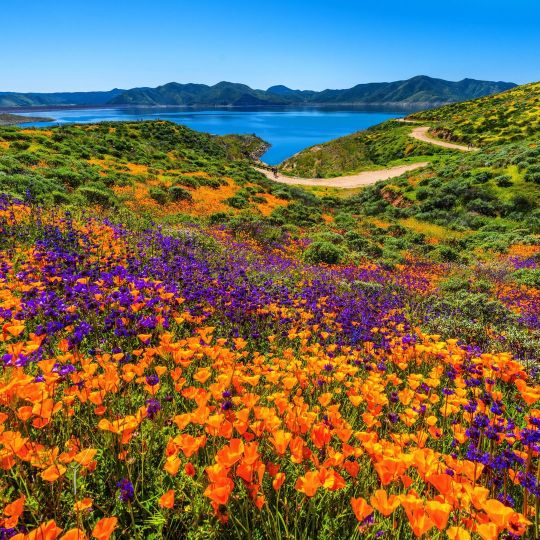
elliotmcgucken
#Peridot Mesa#arizona#Joshua Tree National Park#Diamond Valley Lake#california#superbloom#usa#curators on tumblr#wildflowers#bloom
4K notes
·
View notes
Text




#current vibe#mine#model aesthetic#lana del rey#girl blogger#coquette#ultraviolence#born to die#beauty#pinterest#honeymoon#deer#fawn angel#just girly posts#gone girl#nyc it girl#sofia coppola#bell jar#skins#country#chemtrails over the country club#im a star#bambina#valley of the dolls#girl interrupted#california#delta of venus#diamond#nostaliga#did you know that there’s a tunnel under ocean blvd
5 notes
·
View notes
Text
The king and queen of California spring: lupine and poppy. I just can’t get enough of this color combo. It’s my comfort palette.
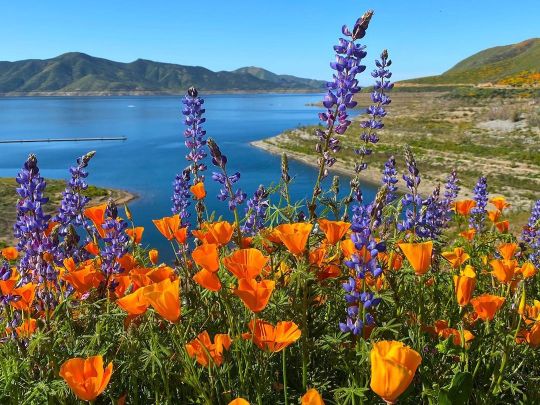

by dgbrit
#california#poppy#poppies#spring#lupine#wildflowers#I think this is Diamond Valley Lake like 35 miles from my house
5K notes
·
View notes
Text
SoCal Super Bloom
Diamond Valley Lake

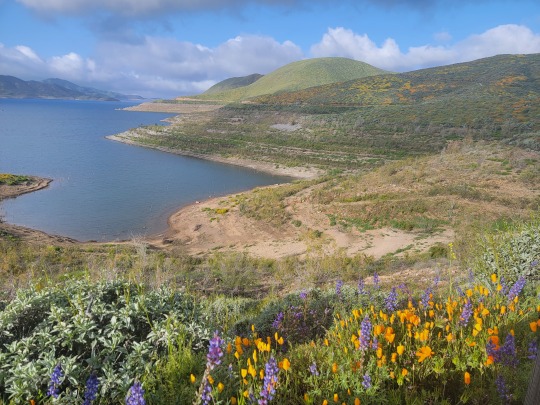
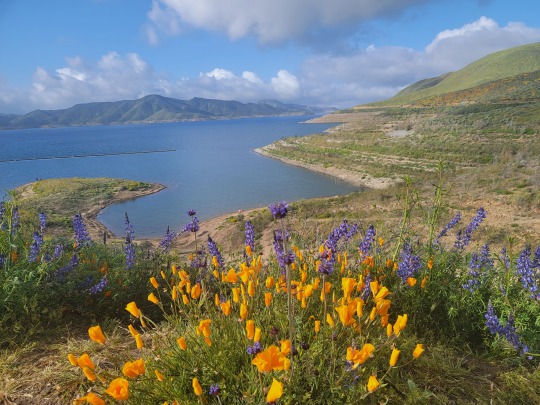
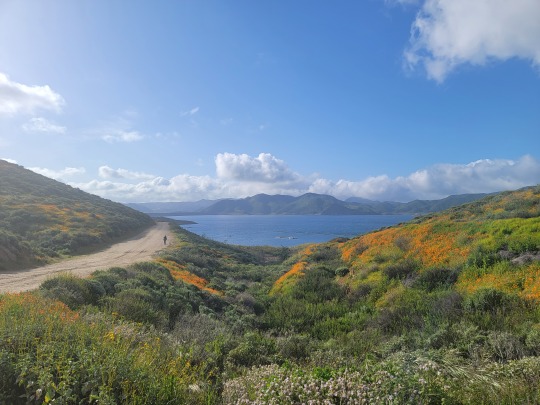
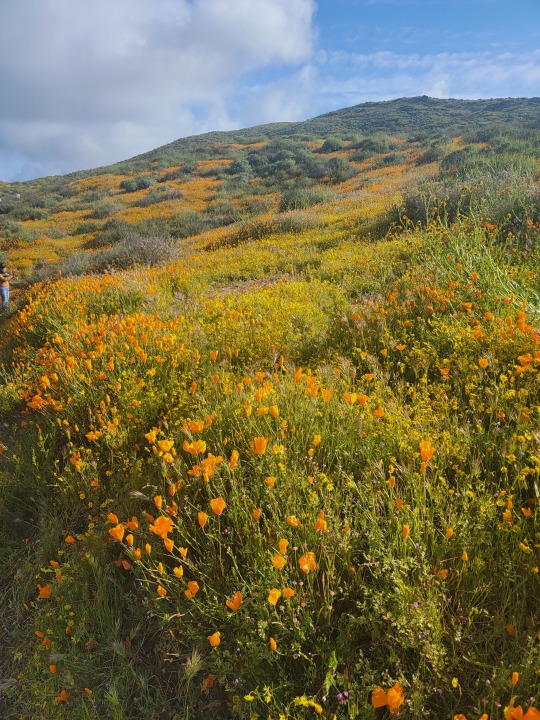
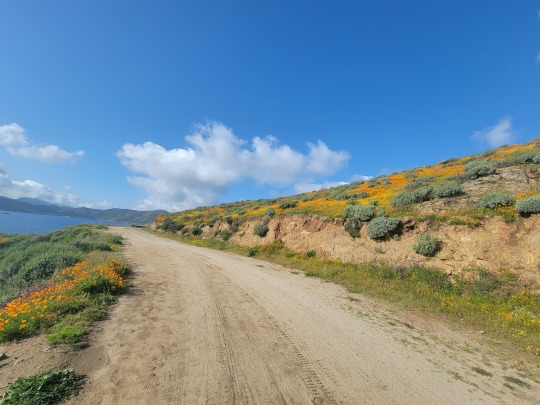
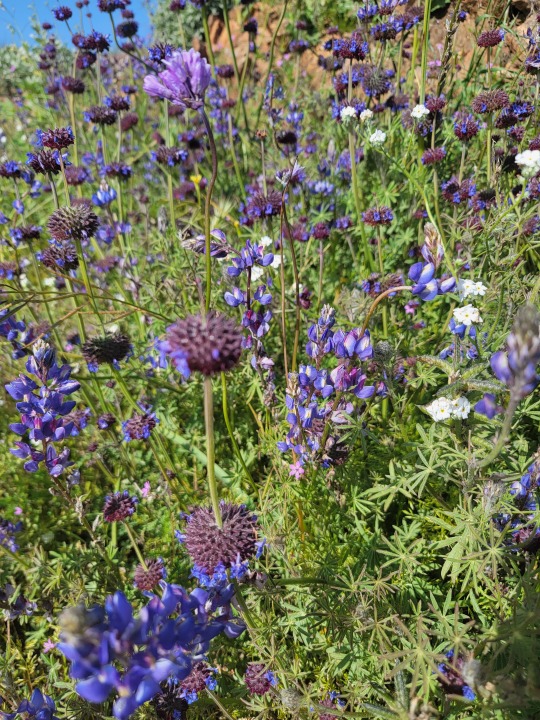






Cedar Creek Falls

#san diego#solo woman#backpack#super bloom#socal#day hike#cedar creek falls#diamond valley lake#california native plants
0 notes
Text

Diamond Valley,
Lake Hemet California
Photo - px8photography
366 notes
·
View notes
Text



cowgirl!Tashi, bc I got the brainworm too… prequel, technically? allusions to marriage. might write some sickening fluff later but I wrote this in one go past my bedtime 😴 I hope it’s coherent
She brought you up the mountain once, long before any sparkling diamond was thought up. Her horse slowly strode, its strong hips and large torso shifting under your melded bodies.
With your arms loosely wrapped around a jacketed waist and a relaxed head turned on her shoulder, your eyes are free to explore the scenery around you.
Sparse saguaros dot the warm landscape. You can just barely see the skittering of the lone lizard, kicking up reddened, tawny dust that looks achingly similar to Tashi’s blushed skin. The setting sun casts mellow reds and sultry oranges across the mountains, the barest hints of deep purple seeping into the valleys. The last stretch of baby-blue is slowly disappearing behind the contrasting peaks, making way for the sparkling darkness.
“There’s supposed to be a meteor shower today..” was Tashi’s excuse to bring you deep into, arguably, the most isolated part of Southern California.
The slow rock of her horse as it courses along the barely beaten path putters off. Tashi’s shoulders slowly go taunt as she pulls the reigns back. She has the good sense to glance at you over her shoulder—make sure you didn’t fall asleep or fall off.
In reality, she just wanted to see your face. That’s all there was to it.
She’s careful not to knock you with her spurs as she dismounts, helping you down like a gentleman with an equally unchivalrous smirk. Her hand is calloused in yours. At your minute hesitation, a second wait before sliding off the horse’s back, she almost offers to catch you like the prince that scoops up the captive maiden.
Yet, your boots meet the dusty floor with no hesitation, kicking up dirt that you kindly brush from her horse’s flank. Coco’s no dragon, and she’s no prince worthy of your excellence. She almost snorts at the idea.
Coco isn’t even yours, but you treat her like it. It’s easier to have two sets of hands to manage a horse, especially of her size. You’d always been better at soothing her, anyway.
It’d almost got her kicked in the face—your expression as you cooed nothings at the beast was sweet and infinitely distracting. The curry comb ventured a bit too low, prompting a twitch that snapped her from it. You’re gonna get her killed if you keep looking like that.
The meteor shower wasn’t due until total darkness took over the sky. She still plopped down on the peak, wordlessly patting the space next to her as she withdrew her iron flask.
The amber liquid would be needed for what she’d do—liquid courage her only comfort from the rapid beat in her ears. She hadn’t been this skittish wary since the last rodeo.
Your grabbing hands made her chuckle, the metal soon escaping her grasp and pressing to your greedy mouth. You drink right from where her lips were, your face content, and she can’t tear her eyes from your profile.
She diverts her eyes to the sky, seeing the first star go flying across the horizon. The sparkling thing lasts for barely a second, but both your gazes catch it.
She can hardly handle when your smile is aimed at her, your enthusiastic, low murmur of “what’d you wish for?” gracing her ears.
It’s especially hard to think when the stars reflect in your eyes. She’s silent, but quick to show you what she wanted.
Deft fingers brush your cheeks as she tilts your face. She waits, lingers, eyes burning yours.
Your lips part.
Hers sink onto them. Her nose slants and slots into place next to yours, the stars firmly forgotten at the sneak of her tongue.
You never did learn what she wished for that day. You were young, and the second she pressed warmly to her all rational thought escaped out the window.
Now, standing at the window of your ranch house and watching her cart two nephews around, one on each shoulder?
You’re pretty sure she got what she wanted, in the end.
#kiera's fics ₊˚⊹ ࿔#tashi duncan x reader#tashi duncan fic#tashi duncan#challengers#challengers fic#cowgirl!tashi…#worms in my brain
77 notes
·
View notes
Text

Spring Mountain Ranch, 1970
The springs of this ranch area made it one of the oldest settlements Las Vegas Valley by Native Americans. By the 1830s it had become a campsite for Euro-American explorers using the Spanish Trail.
Sgt. James B. Wilson and George Anderson established Sand Stone Ranch here in 1876. Their heirs operated the ranch for decades. It was also called Wilson Ranch. On the night of 1/17/42 a rancher in the area witnessed an airplane, "passing over in the twilight … the tail was bobbing up and down and otherwise acting in a peculiar manner." The plane crashed and killed Carole Lombard and 21 others. Tweed Wilson, grandson of the ranch founder, was among the guides who led the search party to the crash site.
Chet Lauck bought the property in '48. He built the ranch house from sandstone and redwood, and renamed it Bar Nothing Ranch.
German Baroness Vera Krupp bought the ranch in '55, expanded, added the pool, and changed the name to Spring Mountain Ranch. Here on a night in '59 she was tied with wire and robbed of a 33-carat diamond. It was next owned by Howard Hughes, who never came to the ranch.
In '72 California auto dealers Fletcher Jones and William Murphy bought the 520 acre ranch from Hughes Tool Co. and announced plans to building a housing community that would support 2000 people. The proposal was defeated by the Nevada Open Space Council and Red Rock Advisory Committee.
The property was sold to the State of Nevada, along with 80 acres at Pine Creek and rights to 52 springs in the valley and surrounding mountains. Spring Mountain Ranch State Park was established in '73. Under the original name Sand Stone Ranch it was listed in the National Register of Historic Places, 4/2/76.
Many of the buildings on the property have been renovated and restored including the sandstone cabins, blacksmith shop, outhouse and the hay and horse barn. Interior improvements were made throughout the ranch house. The above ground irrigation pipes were replaced with underground irrigation and trails were built for the park itself.
Photos: (1, 2) by Vernon Merritt, LIFE magazine. (3) Undated, Howard Hughes Professional and Aeronautical Photographs (PH-00321), UNLV Special Collections.
Saving Spring Mountain Ranch: A baroness, a billionaire, an enchanted escape, and the preservationists who put you on the invitation list - by Jonathan Warren.
Elizabeth Warren: Passionate Defender of Historic Las Vegas Architecture and Landscapes. The Women Who Saved History podcast.
History of Spring Mountain Ranch - Nevada State Parks.
National Register of Historic Places #76001141 Sandstone Ranch


70 notes
·
View notes
Text
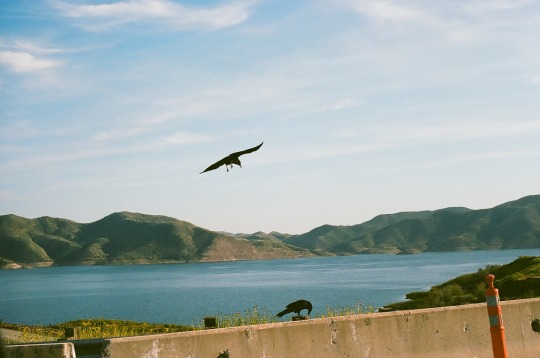
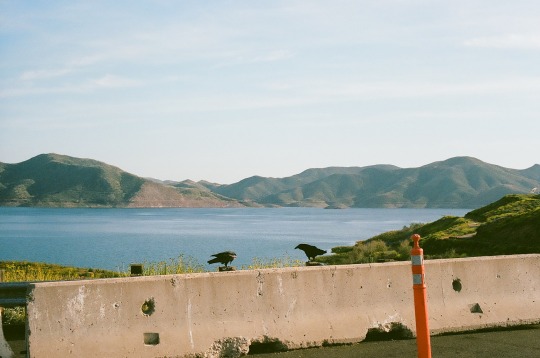
Lunch Time - Diamond Valley Lake, California
#35mm#film#photography#photo#film photography#california#nature#35mm film#analog#camera#canon ae 1#canon#canon photography#kodak#kodak portra 400
11 notes
·
View notes
Text
The Road So Far: A Brief Summary of the Gold Rush AU (Part I, by TolkienGirl)
Recently a reader brought to our attention the need for a succinct narrative summary of the events of the AU. In addition to compiling that (please see Part I, covering the "pre-series" timeline through Maedhros' capture), we refer you to our Wordpress, which includes a timeline and an organization of our first four "Series"... that is, the order of chapter fics and one-shots, vignettes and flashbacks etc., into plot arcs that could roughly provide the basis for "All That Glitters," the prestige TV show.
EVENTS OCCURING PRE-1851
[Stories detailing these events are sprinkled throughout the chronological timeline]
The pre-canon timeline begins in the late 1700s/early 1800s when Finwe, a talented metalworker, emigrates from Ireland, settles in Philadelphia to work in the steel-business, and marries Miriel (whose mental and physical health are precarious). Feanor is born in 1807, when Miriel dies in childbirth. Finwe, a Catholic, marries Indis, an Anglican woman (whose family disapproves of the match) in 1808. Thereafter, Fingolfin (1809) and Finarfin (1810) are born.
When Feanor is going on eighteen, Finwe relocates to New York, where Manwe Sulimo is a rising politician. Finwe is interested in locally representing Irish interests. Feanor is apprenticed in Boston to Aule, a blacksmith, and meets Nerdanel (b. 1809), then a lonely girl in finishing school.
They are married in 1827, despite the disapproval of Nerdanel’s Scottish father (Mahtan), settle in the Hudson Valley on Formenos farm, and have seven sons: Maedhros (b. 1828), Maglor (b. 1829), Celegorm (b. 1832), Caranthir (b. 1835), Curufin (b. 1836), and twins Amrod and Amras (b. 1837).
Meanwhile, Finarfin elopes with Earwen in Ulmo’s Bridge (Missouri) in 1828, temporarily earning Finwe’s disapproval. Finrod is born in 1829, Angrod in 1833, Aegnor in 1834, and Galadriel in 1836.
Fingolfin marries Anaire (of French descent) in NYC in 1830. Fingon is born in 1831, Turgon in 1833, Aredhel in 1834, and Argon in 1837.
In 1832, Manwe’s older brother Melkor Bauglir (who inherited the family plantation in the antebellum South) visits New York, taking an interest in influencing politics. At a dinner hosted by Manwe, Finwe and Feanor encounter Melkor, and Feanor (being an abolitionist, naturally) helps Melkor’s slave Rumil, an accomplished mapmaker, escape.
Following his encounter with Melkor, Feanor’s paranoia increases, which leads him to be stricter with his children (especially Maedhros) and to secretly abuse Maedhros as a way of trying to teach him to endure pain. When Nerdanel discovers this, she puts a stop to it, but Maedhros develops an early understanding that he is to serve as a protector of his family, including his father, if need be.
In 1835, Finwe is elected to City Council in New York. In 1837, Feanor buys an additional home in the City to keep tabs on his half-family. In 1841, Rumil, who has relocated to California, has met a land-holder and cattle-rancher, Elu Thingol (a Spaniard, married to a Chinese woman, Melian). Rumil and Thingol have negotiated for Rumil to take over a property called Mithrim, which contains a diamond mine that Rumil thinks Feanor would be best able to help access and harvest. Feanor conducts a secret mission to California, reconnecting with Rumil, building the Mithrim bridge, and finding a large diamond. Suspicious of Feanor’s activity, Melkor visits Formenos in April (shortly after Feanor’s departure) and takes an interest in 13-year-old Maedhros. Without Feanor to manage the farm or provide for the family, Nerdanel and the boys endure a hard winter. Maedhros begins to develop a tendency towards disturbing premonitions.
Feanor returns in 1842, gifting the diamond to Finwe. Melkor, intrigued by the happenings out west, visits Doriath but is turned away after showing lecherous attentions to 13-year-old Luthien. He begins to explore the continental U.S. more broadly, and, in doing business with a former nautical mapmaker, takes an interest in his 18-year-old daughter Estrela (Arien). After Estrela refuses his proposal of marriage, Melkor has his protégé Mairon capture and torture her. Renamed “Belle,” she is then enslaved as part of a workforce that Melkor uses to advance his westward projects, supervised by a former plantation overseer of his, Cosomoco Gothmog.
In 1843, Morgoth’s steel manufacturing enterprise (one of his eastern ventures) is found to be corrupt and rife with worker abuse. He is recalled from his western travels and sanctioned. He is confined to house arrest rather than being imprisoned. Meanwhile, Feanor sends Maedhros and Maglor to be educated in the city, though he chooses not to send any of the younger boys, which negatively contributes to Celegorm’s self-perception. For the next several years, Maedhros struggles against the temptations of high society while Maglor begins a promising musical education/career. There is increasing unrest between Feanor and his half-family, but Fingon and Maedhros form a very strong mutual friendship.
In 1847, Finwe retires from City Council (with a ceili/party at Formenos). Maedhros meets Finrod’s friend Esther Landau, a young Jewish woman. Feanor and Finwe intend to have Maedhros fill Finwe’s seat on City Council, while Maedhros is more interested in proposing to Esther. In the end, neither event comes to pass: at the end of 1848, Maedhros rejects his grandfather and father’s plans, quarrels with Feanor, and privately breaks off his relationship with Esther without ever introducing her to his family. Just before this, Finrod departs on a solo western adventure.
Meanwhile, Melkor has been quietly released from his imprisonment. In addition to his frontier developments, which he has been remotely managing, he now advises Manwe and other council members. Feanor is aware enough of this to wish for Maedhros to help him investigate Melkor’s doings. By 1849, Maedhros has sunk into a debauched lifestyle, which Fingon (studying to be a doctor under Olorin the physician) is largely unaware of but which Fingolfin notices and is dismayed by. Increasingly paranoid, Feanor threatens Fingolfin’s life after a tense spring and growing conflicts. This creates a rift between Fingon and Maedhros for a time.
In 1850, Melkor has Finwe murdered on the front steps of his home and steals the diamond. Feanor is convinced that Melkor had a hand in the murder, but is unable to completely convince Fingolfin. Maedhros and Fingon reconcile to an increased degree, although both still feel uncertain.
EVENTS OCCURRING 1851 – mid-1852 (“SERIES ONE”)
The timeline for the story officially begins in 1851, in New York. Finrod has recently returned from his western exploration, during which he befriended Beren, whose (now-extinct) tribe is indigenous to the Pacific Northwest, and who, some years before, met and fell in love with Luthien in Doriath. Still unable to seek justice for Finwe’s death, Feanor now wishes to move out west and join Rumil at Fort Mithrim. Feanor and Maedhros gain information from Finrod about the gold prospects in California.
Manwe selects Melkor as the spearhead of the western railroad expansion. Disgusted by this assignment of power, Fingolfin agrees to join Feanor in relocating. Finrod intends to go as well. Finarfin and the rest of his family stays behind, but Galadriel (Artanis) secretly stows away with Fingolfin’s train. Feanor, who is leaving first, has been entrusted with the money to procure wagons at Ulmo’s Bridge in Missouri, where Finarfin’s father-in-law Olwe lives. Nerdanel initially opposes the plan to go west, but is persuaded by the inevitable.
On the road, Feanor and his family encounter Gothmog, who taunts them with Melkor’s rising power and the diamond taken from Finwe’s body. Gothmog injures Nerdanel, which increases Feanor’s resolve to move quickly and trust nobody. In early July 1851, Feanor double-crosses Fingolfin and the townspeople at Ulmo’s Bridge, stealing enough wagons for himself and destroying the res, then killing a number of the town’s militia. He then escapes by burning the titular bridge behind them, knocking Maedhros unconscious when he (Maedhros) refuses to cooperate. Nerdanel, having refused to join in this plan, remains behind.
Now wanted, Feanor, Maedhros, and the other boys continue west, collecting new allies along the way, largely through Maedhros’ recruiting efforts. Celegorm engages in a skirmish that ends with a man being killed and a new manhunt being launched. Maedhros also barters sex for information with a string of barmaids and prostitutes along the way, including Melkor’s spy Thuringwethil, who assaults and scars him by way of claiming a “trophy” for Bauglir.
Rumil tries and fails to communicate to Feanor that increased hostility in the vicinity of Mithrim means it is no longer a safe place for them to join forces. Mairon has insinuated himself as a spy within Mithrim, for a time, and then massacred several of Rumil’s best men. An increased number of militia-men of unknown allegiance are also patrolling the countryside and harassing Mithrim’s inhabitants (who include natives tribespeople and former slaves).
Meanwhile, Fingolfin and his family arrive at Ulmo’s Bridge to find themselves betrayed. After seeing Nerdanel, who intends to return east to Indis, Fingolfin chooses to advance his course with a northward river-crossing. Turgon’s wife Elenwe gives birth to their daughter Idril on the trail, which causes the family as a whole to stop for a time (as autumn closes in). After leaving Elenwe and Idril with a settler family, Fingolfin’s company continues onward. They encounter a posse seeking to revenge Celegorm’s kill, which results in Argon’s death. Fingolfin’s company flees farther north and is caught in a Nebraska blizzard which takes Anaire’s life. While the rest starve, snowbound, they are rescued by Haleth (a native leader who works cooperatively with Thingol, and, unbeknownst to Thingol, with Beren) and her company, which includes Beren and Wachiwi, another native woman who forms a close relationship with Fingon.
Shortly before arriving in Mithrim (between Christmas and New Year’s 1852), Feanor and company encounter Mairon spying on them. After being taunted and questioned by Maedhros, he escapes.
At Mithrim, Rumil is somewhat reluctant to assimilate Feanor’s company. It is revealed that Feanor’s interventions in Mithrim’s development a decade past led to a falling out with Thingol of Doriath, specifically with respect to the diamond mine and the diamond that Feanor gave Finwe. Feanor returns to mining, and also begins to launch attacks on the railroad. Maedhros and Celegorm, on an exploratory mission, discover that the nearby Mount Diablo is being excavated.
Amid growing tensions within Mithrim in the late spring of 1852, Amrod decides to write to Nerdanel. Rumil attempts to mail the letter for him, but returns seriously injured/poisoned. Amrod then rides out himself. Urged by Maedhros and Amras, Feanor and his sons go to find him, but end up embroiled in a standoff with Gothmog at the Utumno headquarters of the railroad project. Feanor is mortally wounded by Gothmog. Maedhros leads the return to Mithrim, but after Feanor dies, rides out without his brothers to attempt to track Amrod down. Mairon and then Gothmog surround and capture Maedhros. Gothmog reveals that Amrod’s horse slipped down a riverbank, and he is presumed dead.
Maedhros is delivered to Melkor in “Angband,” the fortress built within “Thangorodrim” (Mount Diablo).
11 notes
·
View notes
Text
As someone who loves American folk music, I absolutely despise the fact that we chopped off the end of one of our best folk songs, completely stripping it of its meaning.
The song? Woody Guthrie's This Land is Your Land.
If you grew up in the states, you probably learned it somewhere, it's a chill little song about American unity, and how pretty it is here. Here's the part they teach in schools, in churches, and so on:
This land is your land, and this land is my land
From California to the New York island
From the Redwood Forest to the Gulf Stream waters
This land was made for you and me
As I went walking that ribbon of highway
I saw above me that endless skyway
Saw below me that golden valley
This land was made for you and me
I roamed and rambled, and I followed my footsteps
To the sparkling sands of her diamond deserts
All around me, a voice was sounding
This land was made for you and me
When the sun come shining, then I was strolling
And the wheat fields waving, and the dust clouds rolling
The voice was chanting as the fog was lifting
This land was made for you and me
This land is your land, and this land is my land
From California to the New York island
From the Redwood Forest to the Gulf Stream waters
This land was made for you and me
When the sun comes shining, then I was strolling
And the wheat fields waving and the dust clouds rolling
A voice come chanting and the fog was lifting
This land was made for you and me
Oh, sweet, we all belong here is this lovely country! Right? Wrong. Here's the end:
As I went walking I saw a sign there,
And on the sign it said "No Trespassing."
But on the other side it didn't say nothing.
That side was made for you and me.
In the shadow of the steeple I saw my people,
By the relief office I seen my people;
As they stood there hungry, I stood there asking
Is this land made for you and me?
Nobody living can ever stop me,
As I go walking that freedom highway;
Nobody living can ever make me turn back
This land was made for you and me.
2 notes
·
View notes
Photo

Pete Seeger's banjo "This machine surrounds hate and forces it to surrender"
* * * *
Pete Seeger: 20 Essential Tracks
Remember the folk icon with a playlist spanning his acclaimed career
*
This Land Is Your Land Words and Music by Woody Guthrie
This land is your land, this land is my land From California to the New York island, From the redwood forest to the Gulf Stream waters; This land was made for you and me.
As I was walking that ribbon of highway I saw above me that endless skyway; I saw below me that golden valley; This land was made for you and me.
I've roamed and rambled and I followed my footsteps To the sparkling sands of her diamond deserts; And all around me a voice was sounding; This land was made for you and me.
When the sun came shining, and I was strolling, And the wheat fields waving and the dust clouds rolling, As the fog was lifting a voice was chanting: This land was made for you and me.
As I went walking I saw a sign there, And on the sign it said "No Trespassing." But on the other side it didn't say nothing. That side was made for you and me.
In the shadow of the steeple I saw my people, By the relief office I seen my people; As they stood there hungry, I stood there asking Is this land made for you and me?
Nobody living can ever stop me, As I go walking that freedom highway; Nobody living can ever make me turn back This land was made for you and me.
97 notes
·
View notes
Text
A chart from California's Department of Water Resources shows that the state's lakes and reservoirs have hit their healthiest water levels in more than a decade.
The state has faced an abnormally wet winter as moisture-laden storms and atmospheric rivers dumped a deluge of rain and snow beginning in January. Heavy rain helped supplement some of the state's reservoirs, while a "biblical" blizzard in March significantly improved the state's snowpack situation. Once the snowpack begins to melt in the spring, the reservoirs will continue to improve.
On Thursday, extreme storm chaser Colin McCarthy shared the updated chart, revealing the positive improvement to California's major reservoirs.
"California's water storage is at its healthiest levels in over a decade," McCarthy posted on X (formerly Twitter).
"Virtually every major reservoir in the state has average to above-average storage, with a substantial 115% of average snowpack still to melt," he continued. "The last two years have been an amazing reprieve from the multiple brutal, record-breaking droughts that have plagued the state in the last decade."
Newsweek reached out to the California Department of Water Resources by email for comment.
Lake Cachuma is at 100 percent of its capacity, and several reservoirs aren't far behind, including Casitas Lake at 98 percent capacity, Lake Shasta at 95 percent capacity, Diamond Valley Lake at 90 percent capacity and Lake Oroville at 89 percent capacity.
Several reservoirs are above 100 percent of their historical average, according to the chart. They are Lake Shasta, Lake Oroville, New Bullards Bar Reservoir, Folsom Lake, Lake Camanche, New Melones Lake, Don Pedro Lake, Lake McClure, Trinity Lake, Pine Flat Lake, Millerton Lake, Diamond Valley Lake, Lake Sonoma, Lake Casitas and Cachuma Lake.
A few of the state's reservoirs are still below their historical average, such as San Luis Reservoir, which, at 74 percent full, is at 87 percent of its historical average, and Castaic Lake, which is 79 percent full and at 92 percent of its historical average.
The improvement comes after the state battled years of severe drought that depleted its lakes and reservoirs.
Many of the lakes and reservoirs recovered last year after an abnormally wet winter saturated the state. After similar wet weather this winter season, AccuWeather meteorologists believed that California's water situation was in such an improved condition that the state wouldn't struggle with drought until at least 2026.
In some cases this winter, water officials even had to release water from some reservoirs, such as Lake Oroville, because the water level was too high for this time of year. Despite the release, Lake Oroville is still 11 feet above 2023 levels and 120 feet above 2022 levels.
6 notes
·
View notes
Photo
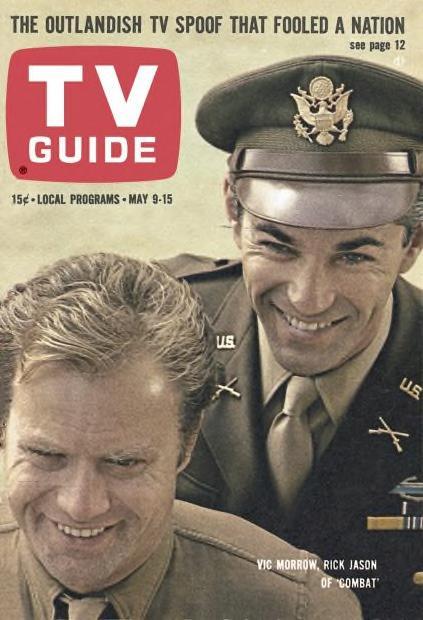
TV Guide - May 9 - 15, 1964
Victor Morrow (born Victor Morozoff; February 14, 1929 – July 23, 1982) Film and television actor. He came to prominence as one of the leads of the ABC drama series Combat! (1962–1967), which earned him an Emmy nomination for Outstanding Continued Performance by an Actor in a Series. Morrow continued acting up to his death during filming of Twilight Zone: The Movie (1983) when he and two child actors were killed by a stunt helicopter crash.
Morrow began appearing on television in the early 1950′s, guest starring on shows like The Millionaire, Matinee Theatre, Climax!, Alfred Hitchcock Presents, The Restless Gun, Trackdown, Richard Diamond, Private Detective, and Telephone Time.
Despite appearing in movies Morrow remained mostly a television actor, appearing in Naked City, Wichita Town, The Rifleman, The Lineup, Johnny Ringo, The Brothers Brannagan, The Law and Mr. Jones, The Lawless Years, The Barbara Stanwyck Show, General Electric Theatre, Target: The Corruptors, The Tall Man, Outlaws, Bonanza, Death Valley Days, Alcoa Premiere, Suspense, The Immortal, Dan August, Hawaii Five-O, Mannix, Sarge, McCloud, Owen Marshall, Counselor at Law and The Untouchables.
He was cast in the early Bonanza episode "The Avenger" as a mysterious figure known only as "Lassiter" – named after his town of origin – who arrives in Virginia City, and helps save Ben and Adam Cartwright from an unjust hanging, while eventually gunning down one sought-after man, revealing himself as the hunter of a lynch mob who killed his father; having so far killed about half the mob, he rides off into the night, in an episode that resembles the later Clint Eastwood film High Plains Drifter. Morrow later appeared in the third season Bonanza episode "The Tin Badge". (Wikipedia)
Rick Jason (born Richard Jacobson; May 21, 1923 – October 16, 2000) Film and television actor most remembered for starring in the ABC television drama Combat! (1962–1967).
In the 1950′s Jason received offers for television series. He guest-starred on ABC's anthology series, The Pepsi-Cola Playhouse. In 1954, he played Joaquin Murietta, the notorious Mexican bandit of the California Gold Rush, in an episode of Jim Davis's syndicated western series Stories of the Century, the story of a railroad detective investigating crime in the American West. He appeared on the NBC interview program Here's Hollywood, in the Rawhide episodes "Incident of the Coyote Weed" and "Incident of the Valley in Shadow", and co-starred in 1969 in The Monk.
In 1960, he starred as insurance investigator Robin Scott in The Case of the Dangerous Robin, a syndicated American television series that lasted only one season. It was not renewed due to Jason's health issues, including back problems. In 1962, he began starring in the television series Combat! as Platoon Leader 2nd Lt. Gil Hanley, probably his most memorable role. In this series he shared the starring role in an alternating episode rotation, with Vic Morrow as Sgt. Chip Saunders, though in many episodes they both appeared. The show was a hit that lasted for 152 episodes in five seasons. (Wikipedia)
The outlandish TV Spoof was the British Series, “The Avengers”, starring Patrick McNee and Honor Blackman.
2 notes
·
View notes
Text
Just weeks after a third of the US population was hit with air-quality alerts thanks to smoke from climate-change-fueled fires in Canada, 100 million Americans are now under heat alerts. A cap of extra-hot air, known as a heat dome, has settled over the West and South, pushing temperatures relentlessly higher.
The map below shows excessive heat warnings in purple and heat advisories in orange, and the forecast is that things will get worse through the weekend. Highs will stay above 110 degrees Fahrenheit in Phoenix; California’s Death Valley is flirting with 130 degrees; and Texas’s grid is struggling to keep the AC on.
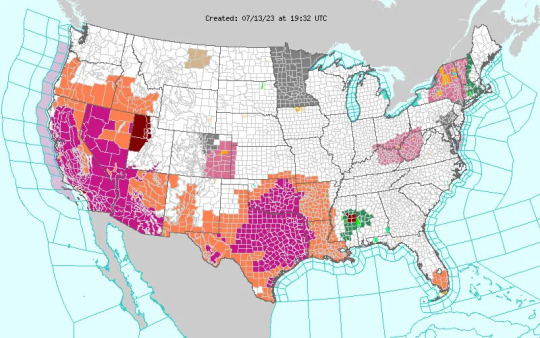
This follows the hottest June on record globally. “With an evolving El Niño event, that is certain to further increase global temperatures,” says Howard Diamond, climate science program manager at the National Oceanic and Atmospheric Administration’s Air Resources Laboratory. (El Niño is a band of warm water that develops in the Pacific Ocean and influences weather around the world.) “Canada has also experienced multiple bouts of prolonged heat this summer, contributing to the worst wildfire season the country has ever seen,” Diamond adds.
A heat dome is essentially stagnation. It forms as a strong high-pressure system. As that air descends to the ground, it compresses and significantly warms up: A few thousand feet up, air might be 80 degrees, but it can reach 100 degrees once it hits the land.
This descending cap of hot air self-perpetuates for days or even weeks. It discourages the formation of clouds, allowing the sun’s energy to hit the landscape full force, further raising ground temperatures. At the beginning of a heat dome, moisture in the dirt and plants evaporates away, somewhat cooling the landscape—it’s sweating, basically. But as the heat continues for days on end, that moisture runs out and temperatures climb higher.
In other words, the heat dome feeds on itself. “There is no cloud cover, there is a lot of solar radiation coming in, there is no precipitation,” says Claudia Tebaldi, a climate scientist at the Pacific Northwest National Laboratory. “You also trigger this feedback—you dry the soil, and there is no way for things to cool down by evaporation.”
That self-perpetuation makes heat domes extremely dangerous. It’s bad enough when temperatures rise above 110 for a single day, especially for people with conditions like asthma, because the heat leads to the formation of ozone, which irritates the airways. But if temperatures soar for days—and especially if temperatures stay high overnight—the body has no time to recover. The stress keeps piling up.
This is all the more precarious in big cities like Phoenix, Houston, and Los Angeles—all of which are baking right now—due to the urban heat island effect. The concrete and brick of the built environment absorbs the sun’s energy, launching temperatures way higher than in surrounding rural areas, which can rely on plants to cool things off. Buildings and other infrastructure then slowly release that heat through the evening, meaning nighttime temperatures stay high. That affects not only people’s physical health but also their mental health, if they’re not able to sleep night after blazing night. Low-income neighborhoods suffer the worst, as they’re consistently and quantifiably hotter than richer ones, since they have fewer green spaces like parks and gardens.
Climate change, of course, is making extreme heat more extreme. “The trend of temperatures increasing everywhere over time is unequivocal,” says Diamond. “An average summer today, for example, might have been considered a hot summer several decades ago. Likewise, a hot summer in the future may very well be considered an average one a few decades from now.”
Scientists are still debating whether climate change will make heat domes more common, says Tebaldi, since their formation depends on complex atmospheric dynamics. The severity of heat domes, though, is a different question. Because the world is generally getting hotter, heat domes start off with temperatures that are higher than before, which could boost their ability to feed back on themselves. This is similar to climate change’s effect on hurricanes: It might not make them more common, but because the storms feed on warmth in the Atlantic, higher temperatures could make them more intense.
Climate change is also exacerbating droughts, meaning there’s already less moisture in the landscape that could evaporate to offset some of the heating, at least in the early stages of a heat dome. “Heat domes are not new,” says Diamond. “But their extent, duration, and amount of extreme heat could very well be attributed to the climate change that we are seeing across the globe.”
13 notes
·
View notes
